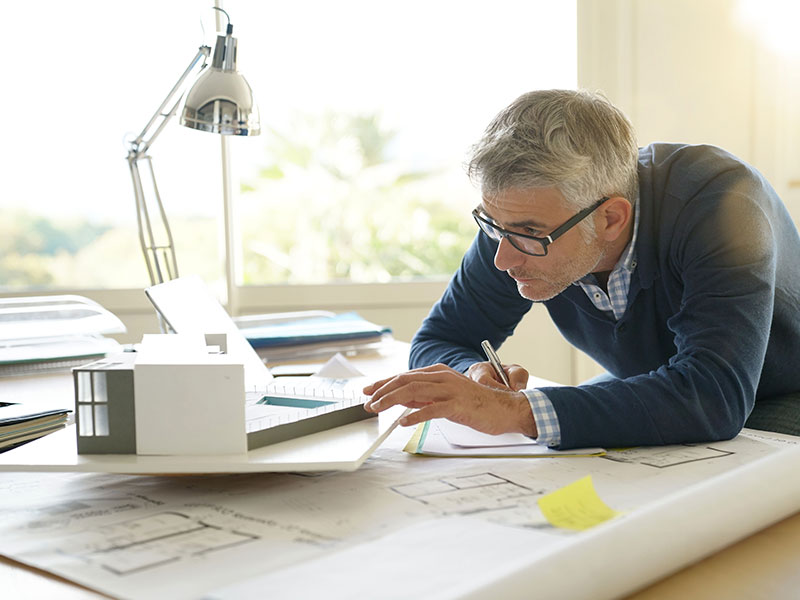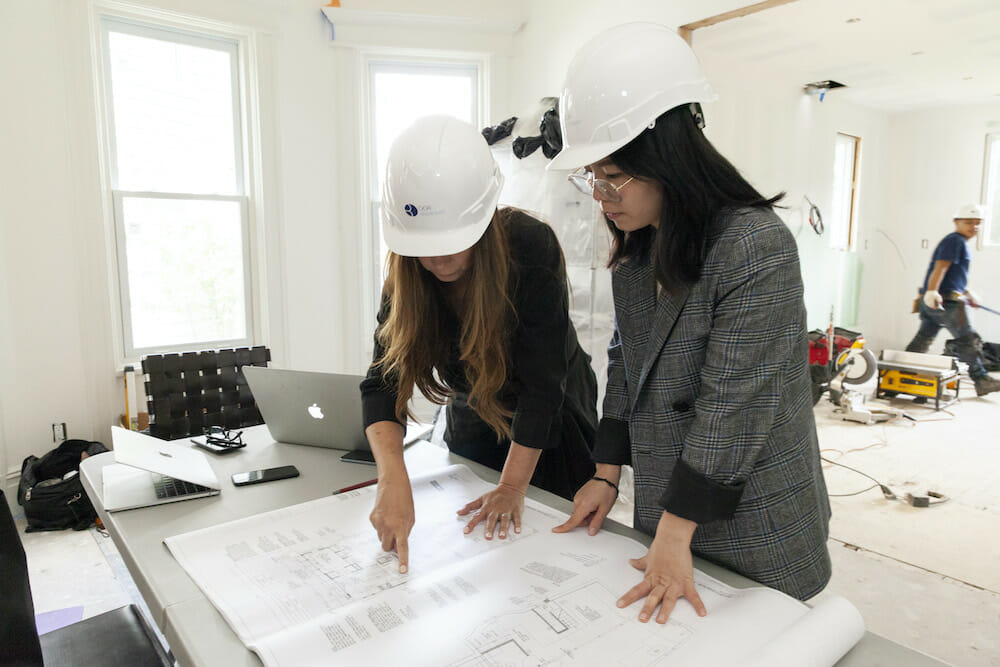Architect Design Trends to Watch in the Coming Season
Comprehending the Diverse Job Paths Available for Aspiring Architect
As an aspiring Architect, you have a globe of job courses awaiting you. Each course supplies one-of-a-kind obstacles and possibilities to use your creative thinking and technological knowledge. Whether you're attracted to typical architecture or the subtleties of lasting style, there's a particular niche that straightens with your passions. Recognizing these diverse alternatives can shape your professional journey, but which direction will you pick to discover first?
Typical Style: Creating Frameworks and buildings
Typical style focuses on creating structures and frameworks that blend functionality with visual appeal. Your layouts can reflect social heritage, showcasing neighborhood customs while meeting contemporary demands.
You'll create abilities in composing, model-making, and site evaluation, enabling you to visualize and interact your ideas efficiently. Engaging with clients, you'll require to understand their vision and equate it right into feasible designs.
In addition, developing codes and sustainability practices are necessary in your work, guaranteeing your structures are secure and eco-friendly. As you expand in your job, you'll find opportunities in household, commercial, and even restoration projects, each offering special difficulties. Accepting conventional architecture paves the means for a fulfilling job that pays tribute to the past while forming the future.
Urban Planning: Shaping Communities and Public Spaces
As an aspiring Architect, you can play an important role as an urban organizer, changing just how neighborhoods connect and operate. By employing community engagement methods, you'll ensure that residents have a voice in forming their environment. Plus, incorporating sustainable layout concepts will aid develop areas that not just satisfy today's demands but additionally protect the future.
Duty of Urban Planners
While several could think of engineers as the sole dreamers behind structures, urban planners play an important role in shaping the more comprehensive landscape of areas and public rooms. By collaborating with numerous stakeholders, you'll help develop parks, transport systems, and residential areas that promote social interaction and availability. Your know-how in spatial design and area dynamics permits you to envision future growth while preserving social heritage.
Community Involvement Approaches
Effective area engagement strategies are crucial for city organizers to ensure that the voices of residents are heard and valued in the preparation procedure. To cultivate significant discussion, you should focus on open forums and workshops where area participants can express their concepts and issues. Usage studies and social media sites to get to a wider audience, making sure diverse viewpoints are included. Collaborating with local organizations can enhance trust fund and facilitate much deeper connections. It is necessary to supply clear info concerning suggested projects and decision-making procedures, allowing homeowners to feel informed and encouraged. By actively incorporating and paying attention feedback, you'll produce rooms that show the area's needs, inevitably causing more effective and sustainable urban settings. Embrace transparency and continual dialogue for long lasting influence.
Sustainable Design Principles
When developing urban spaces, incorporating sustainable design principles is vital for developing settings that prosper both environmentally and socially. You must begin by concentrating on energy effectiveness, using materials that reduce waste and advertise recycling. Take into consideration incorporating environment-friendly rooms, like parks and yards, to enhance biodiversity and improve air quality. Advertising walkability and public transportation can lessen reliance on cars and trucks, promoting a healthier neighborhood.
Designing with water preservation in mind is likewise key-- assume regarding rain yards and absorptive surface areas to manage stormwater. Including area participants during the preparation procedure assurances that the areas you produce fulfill their requirements and motivate social communication. By embracing these principles, you'll add to vivid, sustainable urban landscapes that benefit every person.

Landscape Design: Developing Sustainable Outdoor Atmospheres
As you explore landscape design, you'll find necessary design principles that develop stunning and practical exterior spaces. Lasting practices play a crucial function in making certain these atmospheres grow while decreasing ecological effect. And also, you'll find a variety of job possibilities that allow you to make an actual distinction in how individuals engage with nature.
Layout Concepts in Landscape
Understanding layout concepts in landscape architecture is important for creating sustainable exterior atmospheres that balance with nature. You'll need to ponder aspects like range, percentage, and equilibrium to assure your designs really feel natural and welcoming. Incorporating indigenous plants not only enhances biodiversity yet additionally lowers water use, making your landscape durable. Think of the circulation of room and just how individuals communicate with it; paths and seating locations should invite expedition and leisure. Additionally, take notice of seasonal adjustments, making with materials that enhance the environments year-round (Architect). By focusing on sustainability and aesthetics, you can create outside rooms that enhance the neighborhood and advertise wellness. Embracing these concepts will establish a solid foundation for your job in landscape architecture.
Sustainable Practices Review
Lasting techniques in landscape style not just focus on appearances however additionally prioritize eco-friendly health and source preservation. You can develop spaces that advertise dirt health and wellness, such as making use of organic products and exercising permaculture concepts. Inevitably, these practices ensure your styles benefit both people and the setting for years to come.
Profession Opportunities Expedition
With a strong foundation in sustainable techniques, landscape design supplies a range of career paths that enable you to make a meaningful influence on the setting. You can function as a landscape developer, creating aesthetically pleasing and practical outdoor rooms, or specialize in eco-friendly reconstruction, helping to revive damaged ecological communities. Urban coordinators usually team up with landscape engineers to create eco-friendly spaces in metropolitan setups, improving city livability. If you're enthusiastic regarding education, consider coming to be a landscape design teacher, inspiring future generations. In addition, you could deal with nonprofits concentrated on environmental sustainability or take part in study to introduce new techniques. Each course not just shapes gorgeous atmospheres yet likewise cultivates try this site a healthier earth for future generations.
Lasting Style: Concentrating on Eco-Friendly Practices
As you discover your career in architecture, embracing eco-friendly practices can set you apart in a competitive area. Lasting layout concentrates on developing buildings that reduce ecological impact while improving passenger wellness. By including renewable products, energy-efficient systems, and lasting structure methods, you'll add to a greener future.
Beginning by obtaining knowledge of eco-friendly qualifications like LEED or BREEAM, which can reinforce your credentials. Consider exactly how all-natural light, ventilation, and thermal performance can enhance style. Team up with engineers and ecological specialists to innovate remedies that reduce waste and save sources.
Do not fail to remember the importance of area participation-- interesting local stakeholders can influence designs that balance with the atmosphere. As customers significantly prioritize sustainability, your knowledge in environmentally friendly techniques will not just draw in projects but also meet your passion for liable architecture. Welcome this vital facet of the profession, and enjoy your occupation grow.
Historic Preservation: Shielding and Recovering Social Heritage
While you start on your architectural journey, take into consideration the essential duty of historic preservation in maintaining our social heritage. This field concentrates on the security and restoration of significant structures, sites, and structures that inform the tales of our past. By engaging in historical preservation, you'll aid protect the architectural legacy that shapes community identity.
As a historic conservation Architect, you'll evaluate historic relevance and evaluate the wikipedia reference problem of structures. You'll work carefully with preservationists and chroniclers to guarantee genuine restoration methods are used. This job course permits you to blend imagination with research, allowing you to develop remedies that value original products and workmanship.
Your work not just contributes to sustainability by reusing existing structures but also fosters a feeling of satisfaction within communities. Accepting this course will certainly aid you become a guardian of history, protecting the tales and visual appeals that enrich our lives.
Inside Architecture: Enhancing Indoor Spaces
Historic conservation and interior architecture both share a dedication to boosting the built atmosphere, but they concentrate on various facets. While historic conservation stresses preserving a structure's historic and cultural worth, interior architecture absolutely nos in on optimizing interior rooms for capability and appearances.
As a hopeful Architect, you'll locate that interior architecture enables you to blend creative thinking with technological skills. You'll design areas that not just look excellent but likewise promote comfort and performance. This area involves recognizing exactly how light, shade, and materials connect within a space, affecting state of mind and functionality.
You'll work on different projects, from residential homes to industrial offices, making certain that each environment satisfies the demands of its passengers. By prioritizing user experience, you can change next insides into motivating and functional spaces, making a considerable influence on just how individuals communicate with their environments. Embrace the opportunity to improve interior atmospheres and shape the way people work and live.
Industrial Design: Merging Capability With Aesthetics
Commercial design plays an important role in creating products that effortlessly mix aesthetics with capability, making certain that what you make use of daily is not only aesthetically enticing however likewise useful. As a hopeful Architect, you might involve yourself in this field, concentrating on making every little thing from furniture to consumer electronic devices. Your work involves understanding individual requirements, materials, and manufacturing processes, allowing you to produce ingenious services that enhance day-to-day experiences.
In commercial style, you'll commonly collaborate with marketing professionals, designers, and manufacturers, making certain that your styles are not only stunning but likewise viable. This career course supplies a dynamic environment where creative thinking satisfies functionality, making it a satisfying option for engineers interested in shaping the items of tomorrow.
Regularly Asked Concerns
What Educational Certifications Do I Need to Come To Be an Architect?
To become an architect, you'll need a professional level in design, commonly a Bachelor's or Master's. Furthermore, you'll have to finish an internship and pass the Architect Registration Examination to exercise lawfully.
Are There Qualification Demands for Various Building Career Paths?
Yes, there're qualification demands for various building paths. Architect. You'll need to pass tests, total internships, and occasionally go after specialized training, relying on your selected emphasis, like landscape design, metropolitan design, or historic conservation
What Software Skills Are Important for Designers Today?

How Can I Gain Practical Experience While Studying Style?
You can get useful experience by interning at building companies, taking part in style competitions, offering for neighborhood tasks, or working together with classmates on real-world tasks. These opportunities improve your skills and develop valuable connections in the sector.
What Task Opportunities Exist Outdoors Conventional Style Firms?
You can explore different work chances outside traditional design companies, like urban preparation, interior decoration, landscape style, construction monitoring, realty advancement, or also roles in sustainability consulting. Each deals distinct difficulties and incentives.
Whether you're drawn to standard style or the nuances of sustainable layout, there's a niche that lines up with your interests.When developing city spaces, integrating lasting design principles is crucial for producing environments that flourish both ecologically and socially.As you check out landscape style, you'll find necessary layout concepts that develop gorgeous and practical exterior rooms.Recognizing design principles in landscape architecture is important for producing sustainable outside atmospheres that balance with nature.In industrial style, you'll commonly team up with manufacturers, online marketers, and engineers, guaranteeing that your designs are not only beautiful but also feasible.